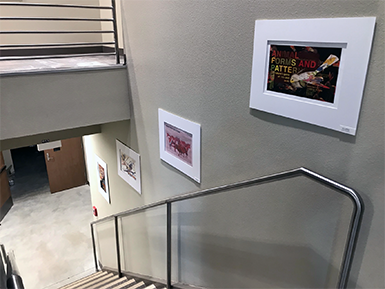 |
| Poster by Erica Scherer (2018) |
The delightful bird sculpture in this poster is the work of a North Carolina-based artist named
Anne Lemanski. We've blogged about her
once before. At
her website, you can see lots of examples of her current work. She also makes
wonderfully colorful collages based on natural images.
The poster itself was designed by
Erica Scherer, a graphic design student at the
University of Northern Iowa. She designed it as part of a problem in which each of 30 students (this was their first course in graphic design) designed three different posters about Lemanski's animals. Of the resulting 90 posters, 25 of them are being exhibited at the interpretive building of the
Hartman Reserve Nature Center in Cedar Falls IA. The exhibit (curated by
Roy Behrens) begins officially on Monday,
November 5 and continues through
December 31, 2018. It is free and open to the public.
Below is a second poster, designed by
Kailie Hesner, that resulted from the same class project. We will be sharing more of these in the days and weeks ahead.
 |
Poster by Kailie Hesner (2018)
|
By fortunate coincidence, the exhibition will open in the same week (November 7-9) as the annual gathering of the
Iowa Association of Naturalists, which means that these works will be viewed by a substantial number of wildlife and conservation advocates. The schedule of events and registration materials are
available online.
Artworks shown are copyright © the artist, and the posters are copyright © by their designers. Our thanks to Katie Shelton and Anne Lemanski for enabling this project to happen. It has been enjoyable.




















































